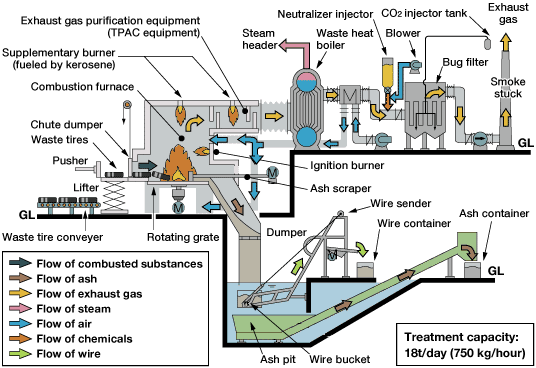The Sumitomo Rubber Group has been working to promote reuse and recycle as well as reducing the waste and hazardous waste by using the resources efficiently.
Concerning waste reduction, we are promoting activities through the Environmental Management System Subcommittee under the Sustainability Promotion Working Group.
The risks and opportunities are as follows:
|
Risks
|
Opportunities
|
|
|---|---|---|
| Policies and regulations |
|
|
| Capital flow and financing |
|
|
| Reputation |
|
|
| Operations |
|
|
| Internal |
|
|
The Sumitomo Rubber Group undertakes the periodic review of risks in light of changes in risks associated with and the external environment surrounding its business operations. The risks identified concerning waste are as described above. The EMS Subcommittee continuously monitors these risks, and in the event of an environmental incident, a report is issued to share information with relevant parties, and follow-up is conducted until appropriate measures are completed. In addition, if any material risk affecting the Group as a whole emerges or is expected to emerge, we will establish a risk control headquarters pursuant to the Regulations Concerning Risk Control.
The targets and results are as follows.
| 2024 target | Waste emissions (per unit) compared to the previous year: -1% |
|---|---|
| 2024 result | Waste emissions (per unit) compared to the previous year: -5% * Including the impact of the closure of the US factory |
| 2025 target | Material recycling rate compared to the previous year: +1% * To promote resource circulation and waste reduction, we have set a new target for material recycling by 2025. |
| Medium-to long-term target | Promotion of material recycling |
The Sumitomo Rubber Group is promoting initiatives to create a recycling-oriented society, and in 2013, we achieved zero direct landfill of waste at 23 production bases, including affiliates in Japan and overseas. We are continuing these efforts.
In Japan, around 100 million tires weighing approximately 1 million tons are disposed of every year. Meanwhile, the problems surrounding waste tires are becoming more serious, with the diversification of waste disposal methods due to the development of high-performance tires, the increase in environmental impact due to inappropriate disposal methods, and the pressure on remaining capacity at final disposal sites. To contribute to the resolution of these issues, the Sumitomo Rubber Group is engaged in the retreading business, which remanufactures new tires from waste tires, while striving to otherwise recycle waste tires.
The Sumitomo Rubber Group introduced a thermal recycling system that uses waste tires as boiler fuel at its Nagoya Factory in 1982, and subsequently introduced it at its Shirakawa Factory and Miyazaki Factory. The system is effectively utilized as an energy source.
